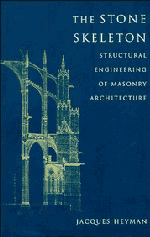7 - Spires
Published online by Cambridge University Press: 05 August 2014
Summary
A masonry spire is usually octangular in cross-section; the square tower is converted by squinch arches or other means near its top into a regular octagon, from which the spire springs. Such a spire surmounts the church of St Mary at Hemingbrough (Yorkshire, East Riding), which is surprisingly large for a small village; it was in fact a collegiate church under the Prior and monks of Durham. The height of the thirteenth-century central tower, about 18.5 m, is in keeping with the general mass of masonry, but the total height to the top of the spire is 54.4 m (fig. 7.1). The spire itself was added in the second quarter of the fourteenth century, and springs from slightly below the parapets of the tower; it measures 37.5 m, and thus forms two-thirds of the total height of the church. The visual impact is curious, although Pevsner believes that the composition ‘happily breaks all rules of harmonious proportion’.
The ‘diameter’ of Hemingbrough spire at its base measures 5.50 m. A diameter is rather an imprecise measure for a spire whose horizontal cross-section is an octagon, but, as will be seen, some insight into the behaviour of spires can be obtained by treating a spire as a right circular cone, at least in the first instance.
- Type
- Chapter
- Information
- The Stone SkeletonStructural Engineering of Masonry Architecture, pp. 127 - 138Publisher: Cambridge University PressPrint publication year: 1995



